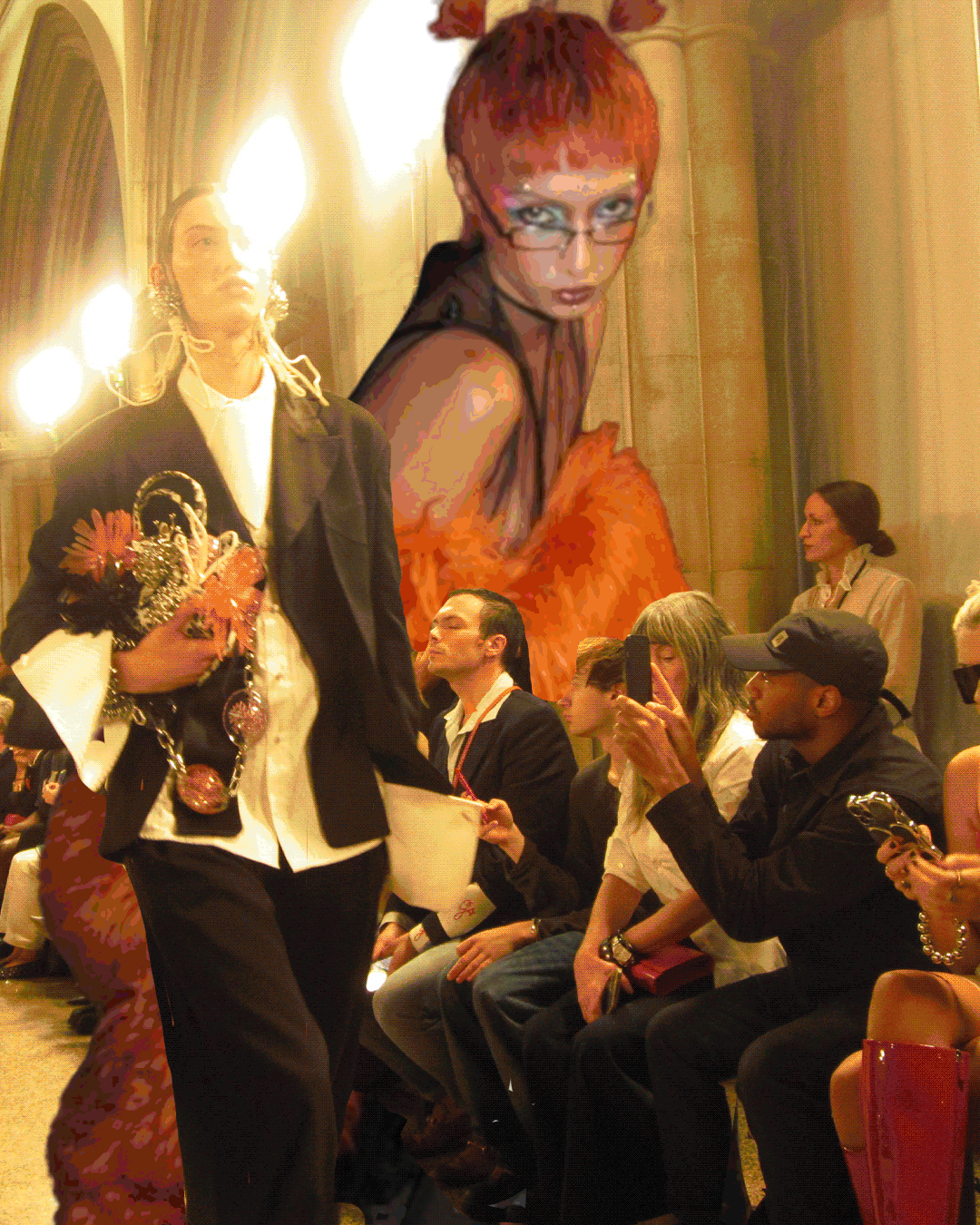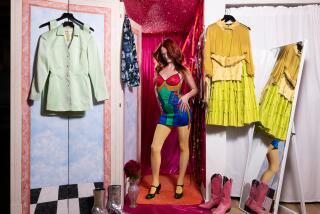London’s Luxe Life
- Share via
LONDON — Three words sum up British fashions for the spring and summer of 2001: business as usual.
Although the popularity of the London shows waxes and wanes dramatically from year to year, British designers can always be counted on to provide more drama and outlandish creativity than just about anything to be found on runways in New York, Paris and Milan.
Forty-nine runway shows over five days provided a riot of style and entertainment, yet did not obscure the fact that this is an industry now worth more than $28 billion a year.
The big draws, for buyers and the press, are designers Alexander McQueen, Hussein Chalayan and Julien Macdonald.
From Jasper Conran’s pleated micro-minis and knit bikinis in tempting sorbet shades to Anthony Symonds’ sharp leather suits and ruched jersey tops, the emphasis, as it usually is here, is on looking glossy and gorgeous.
The organizers of London Fashion Week, the British Fashion Council, said the number of press and buyers attending in the first two days alone surpassed five-day totals last season.
Among the displays that kept them coming were Clements Ribeiro’s array of striped knits and elegantly draped dresses in fluid white silk jersey, showing the style that recently won Suzanne Clements and Inacio Ribeiro the role of art directors to the French fashion house Cacharel.
For an audience that included actresses Joely Richardson and Brenda Blethyn, Welsh knitwear whiz Julien Macdonald went heavy on the crystal, disco beading and jewels, strewing them on dresses so tiny they almost didn’t qualify for the name.
With an eye on the headlines, Macdonald also produced a dress covered with hand-embroidered 18-carat gold balls and two-carat diamonds on the shoulder strap, valued at $1.4 million--besting the $350,000 diamond- encrusted gown shown by Maria Grachvogel earlier in the week.
At a show packed with English celebrities--including actor Simon Callow and Lady Sarah Chatto, niece of Queen Elizabeth II--Conran sent out his models in a series of micro-shorts and “bandage” tops in leather, cashmere or smothered in large pink sequins.
Blue and pink diamond knit was used for swimsuits for both men and women, and for men’s tank tops, part of a male range that included snappy double-breasted suits, clinging singlets and cotton slouch trousers.
Topless satin evening dresses were worn with wispy tulle mini-jackets dotted with silver sequins.
On the dottier end of the fashion spectrum, Polish-born Arkadius Weremczuk presented a rural idyll dotted with hay bales, painted birds and peasant outfits--very Breughel, very bohemian.
There were neckties made of pink braided hair and breeches in white and turquoise toweling, frock coats with bustles and ruched trousers. His show, accompanied by a soundtrack of farmyard noises, featured a model who crushed strawberries into her white chiffon blouse and dribbled juice down her leather skirt.
Hussein Chalayan, ever the showman, dressed his models as “replicants” from Ridley Scott’s film “Blade Runner” in futuristic outfits that featured top-stitching on imaginary pockets and seams and graph-print fabric crisscrossed with zigzag threads.
Highly tailored jackets were reassembled to incorporate panels from more casual denim jackets; concealed sun-ray pleats swung at the hem of tapering skirts.
More to Read
Sign up for Essential California
The most important California stories and recommendations in your inbox every morning.
You may occasionally receive promotional content from the Los Angeles Times.










